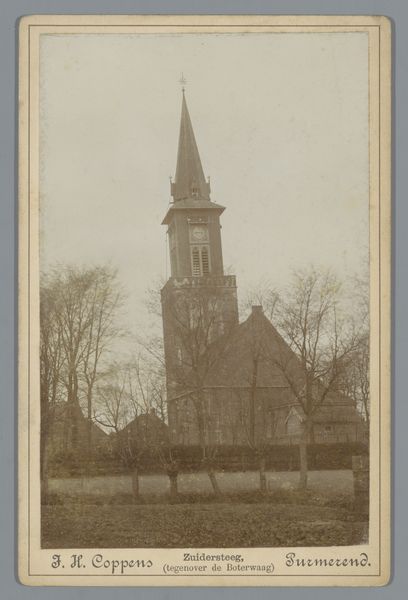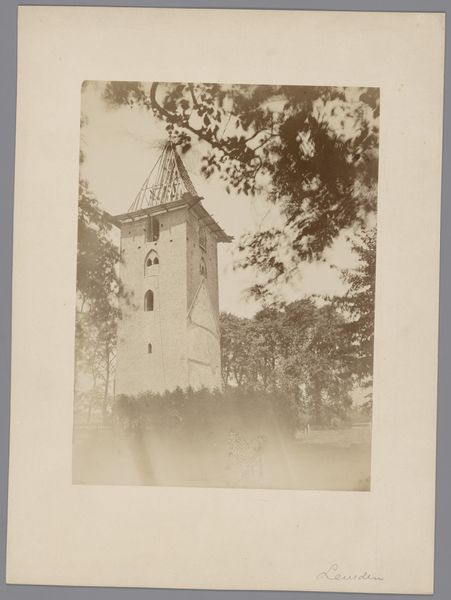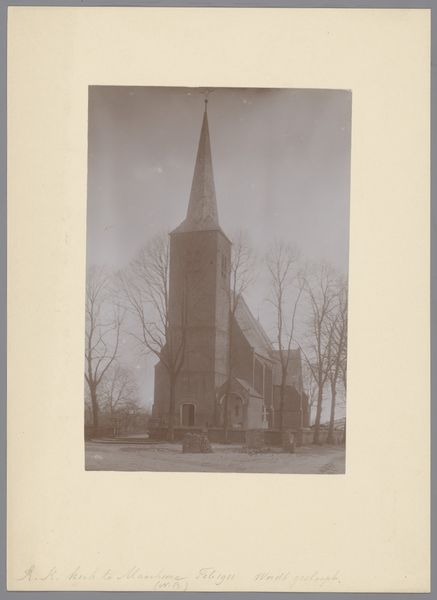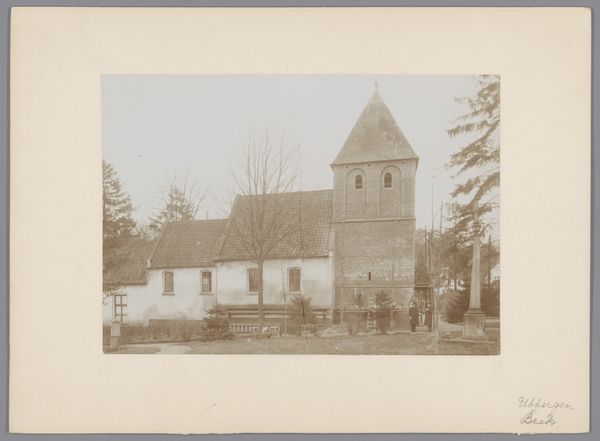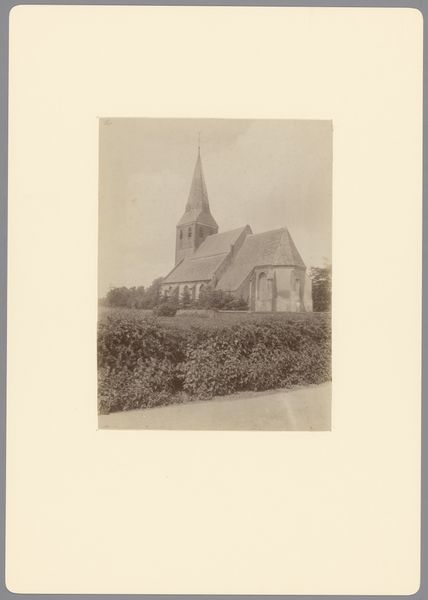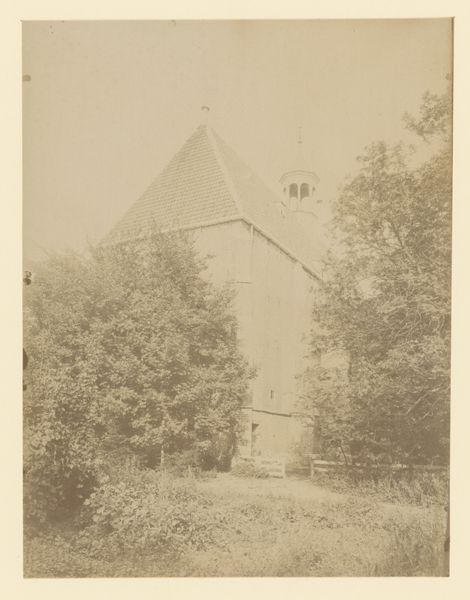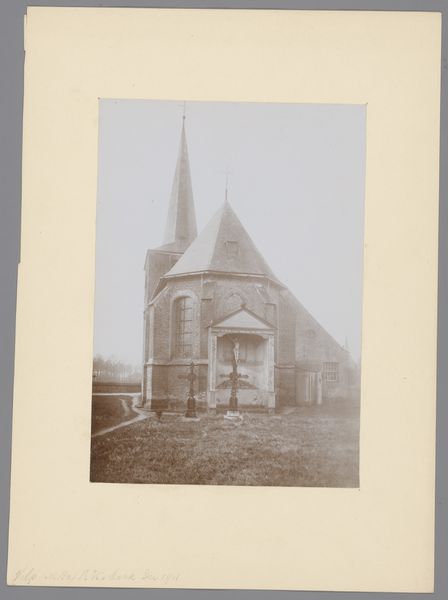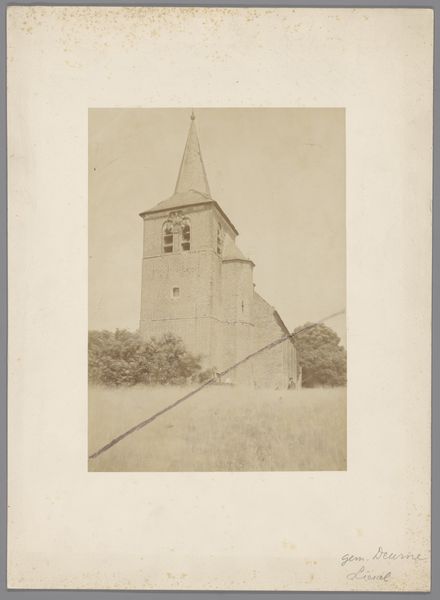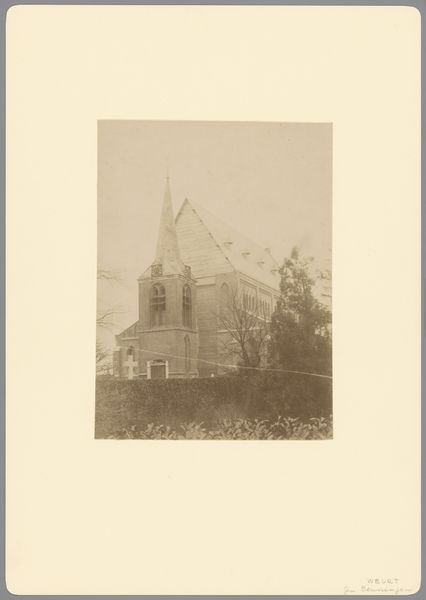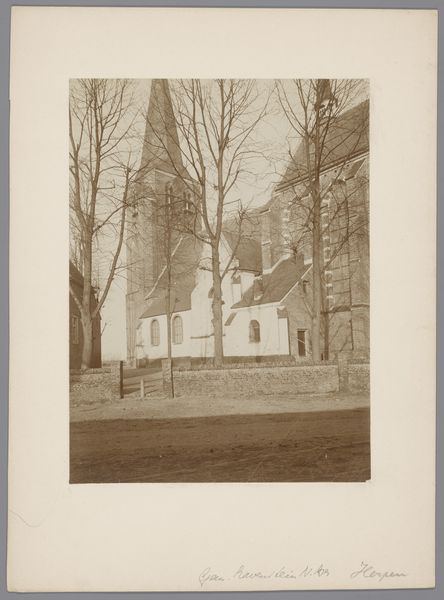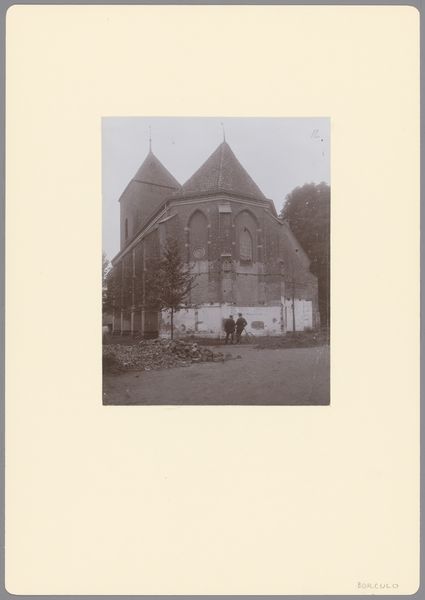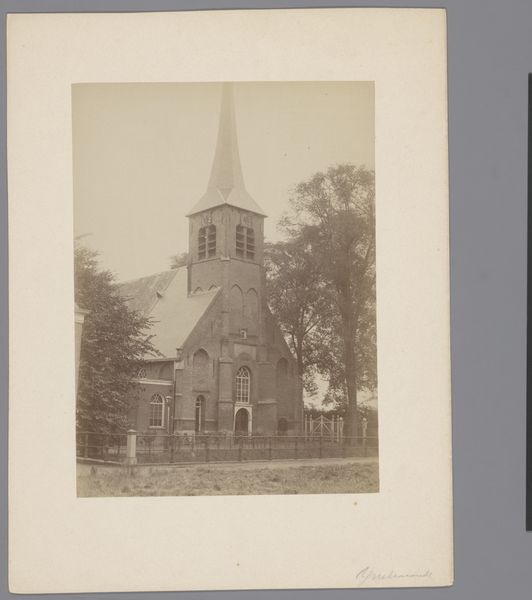
Dimensions: height 100 mm, width 62 mm
Copyright: Rijks Museum: Open Domain
Curator: Here we have Arthur Gabler’s albumen print, “Tellskapelle, Zwitserland,” created sometime between 1873 and 1888. Editor: It's striking. Such delicate tonality, like looking at a memory. A secluded chapel emerges from the shadowy trees. I notice there are figures present! A standing person to the left and a seated one on the little staircase. It projects serenity, and perhaps a bit of longing for a simpler past. Curator: Indeed. Gabler was working within a time of intense nation-building across Europe, and Switzerland was no exception. We have to ask how a romantic vision of the landscape became integral to the formation of national identity. Look how the built environment and landscape almost seem to melt into one another, it presents a vision of the intersection between human life and nature. The figure could be viewed in the frame of society itself – specifically the power structures, such as gender and class, at the time. How does their inclusion of that figure impact the broader sociopolitical sphere? Editor: You’re absolutely right. There is that tension inherent in romanticism - nature offering a refuge from industrialization, yet even here, within this 'untouched' space, human architecture asserts its presence. The figure's subdued presence speaks to a particular historical narrative, one of stewardship, perhaps. Is it also asserting a level of access that isn’t available to all? It has me questioning who that access is granted to and what hierarchies were embedded in this scene. Curator: Exactly, and albumen prints, because of their mass-produced format at the time, facilitated broad consumption. The circulation of these images influenced perceptions and values around Swiss identity. We should consider how the rise of tourism connects to this; Switzerland actively constructed this image as an unspoiled, romantic place, influencing tourism through selective perspectives. The creation of an iconographic chapel would therefore serve as propaganda, in effect. Editor: Fascinating. To appreciate a photo like this isn’t simply admiring a quaint scene. Curator: Not at all. Instead, by thinking about the societal narratives, we have to challenge conventional viewpoints to gain deeper awareness. This forces us to look at photographs of Switzerland in a different way. Editor: A critical lens offers such necessary insight, it allows us to address themes central to that historical era, such as tourism, landscape, access, and representation, enriching our view of the artwork and that period.
Comments
No comments
Be the first to comment and join the conversation on the ultimate creative platform.
